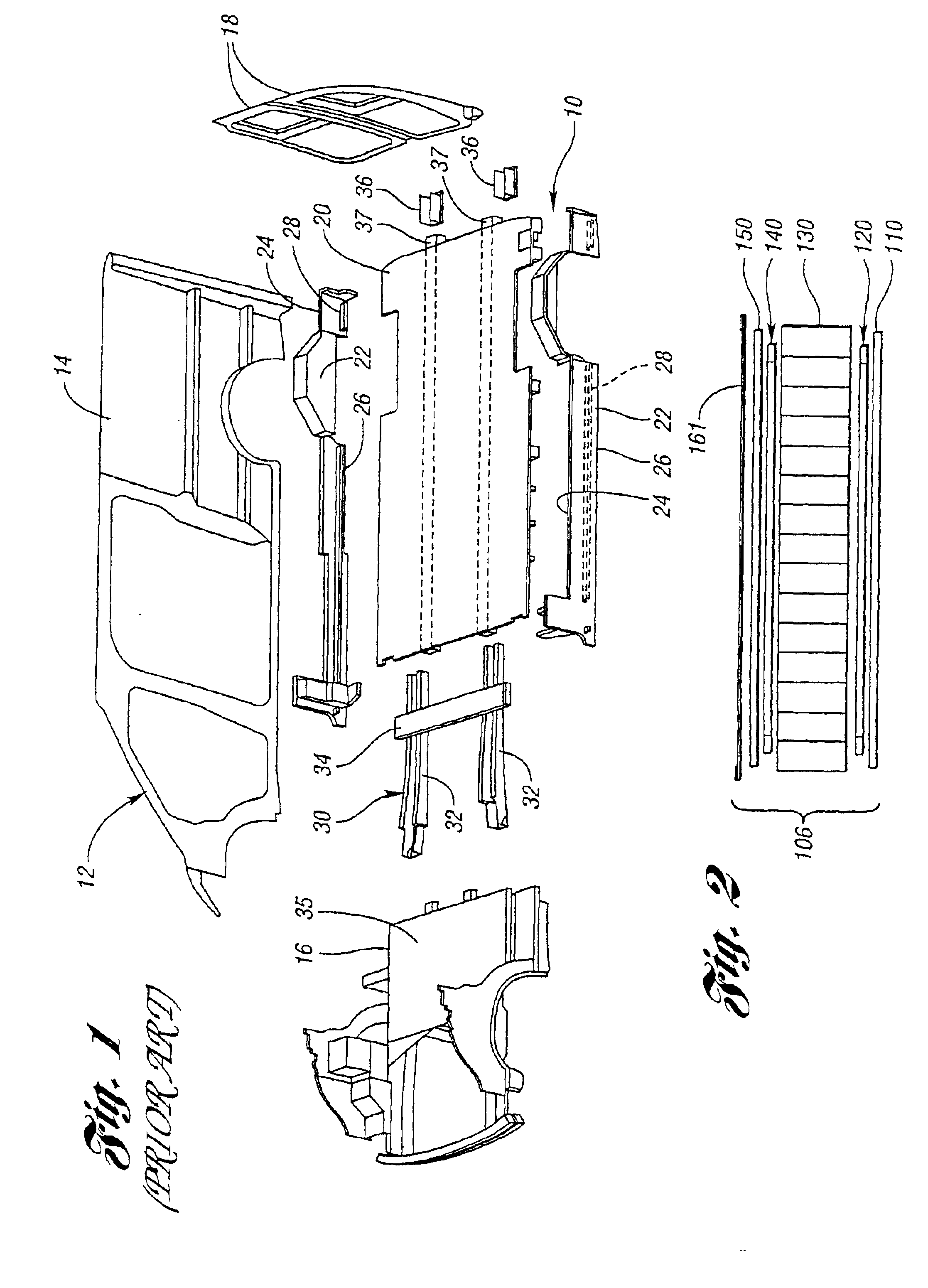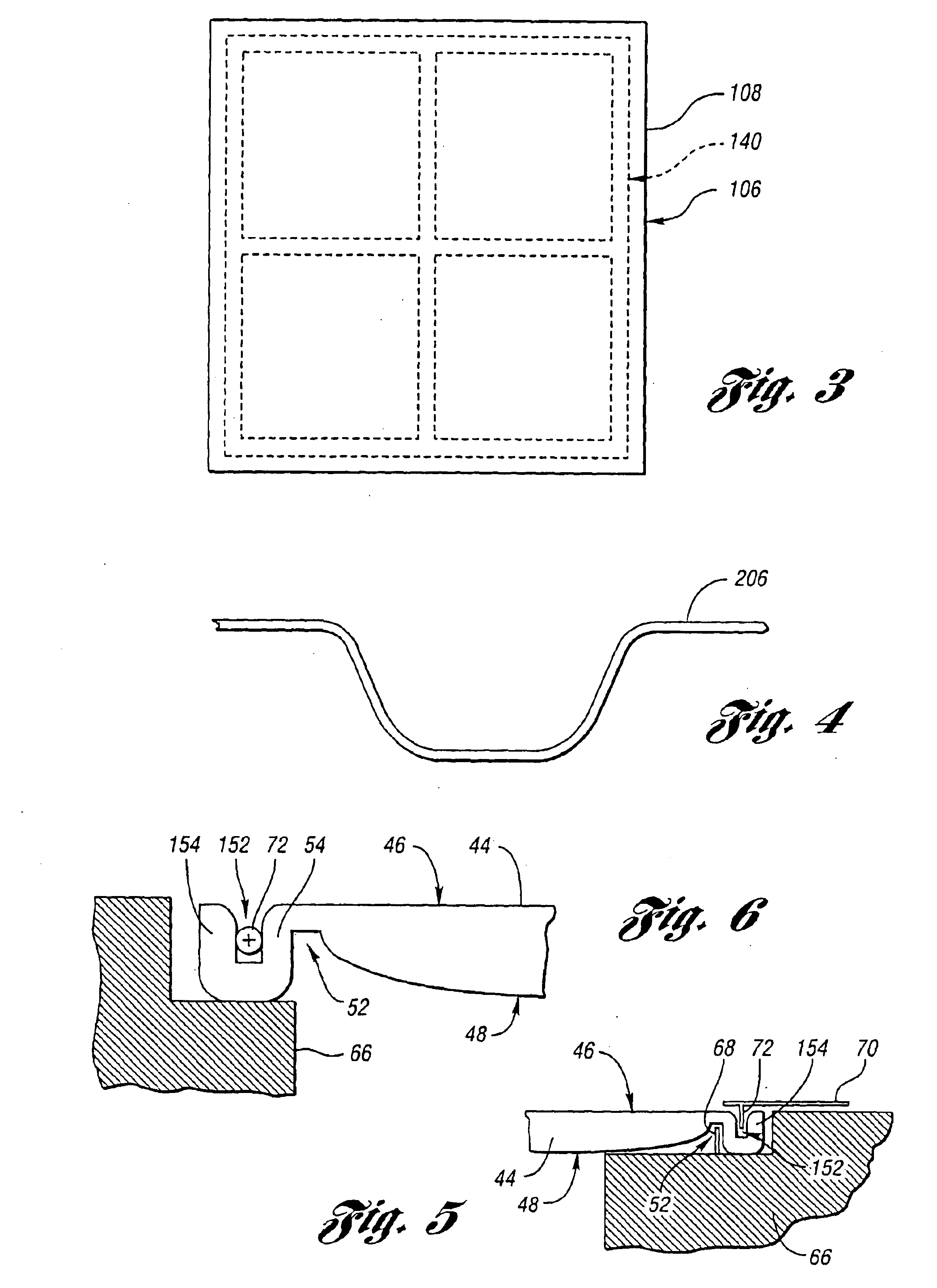Reinforced composite vehicle load floor of the cellular core sandwich-type
a composite structure and load floor technology, applied in vehicle arrangements, roofs, transportation and packaging, etc., can solve the problems of high manufacturing cost and complexity, low level of automation, and typical heavy structure, and achieve simple and cheap manufacturing and high throughput
- Summary
- Abstract
- Description
- Claims
- Application Information
AI Technical Summary
Benefits of technology
Problems solved by technology
Method used
Image
Examples
Embodiment Construction
FIG. 2 shows a stack formed during a first step of a method of making a reinforced composite vehicle load floor of the cellular core sandwich-type of the present invention. The first step is used to make the load floor, generally indicated at 106 in FIG. 2.
In this example, the stack is made up successively of: a bottom skin 110 made of a reinforced thermoplastics material; a lower skeletal frame structure of reinforcing slats 120 each of which may be made of a reinforced thermoplastic composite or pultrusion; a cellular core 130 made of thermoplastics material; an upper skeletal frame structure of reinforcing slats, generally indicated at 140, each of which may be made of a reinforced thermoplastic composite or pultrusion; and a load-bearing upper skin 150 made of a reinforced thermoplastic material. Alternatively, the slats may be made of other types of pultrusions or other materials such as metal.
In addition, the stack includes an outer covering layer 161 made of a woven or non-wo...
PUM
 Login to View More
Login to View More Abstract
Description
Claims
Application Information
 Login to View More
Login to View More - R&D
- Intellectual Property
- Life Sciences
- Materials
- Tech Scout
- Unparalleled Data Quality
- Higher Quality Content
- 60% Fewer Hallucinations
Browse by: Latest US Patents, China's latest patents, Technical Efficacy Thesaurus, Application Domain, Technology Topic, Popular Technical Reports.
© 2025 PatSnap. All rights reserved.Legal|Privacy policy|Modern Slavery Act Transparency Statement|Sitemap|About US| Contact US: help@patsnap.com



